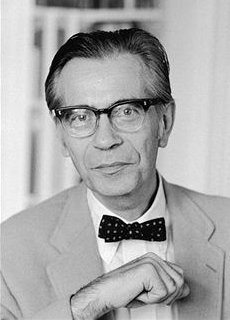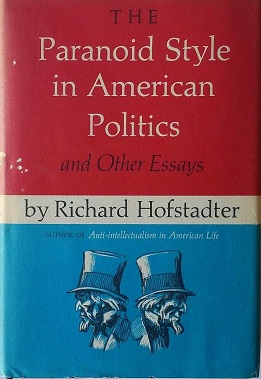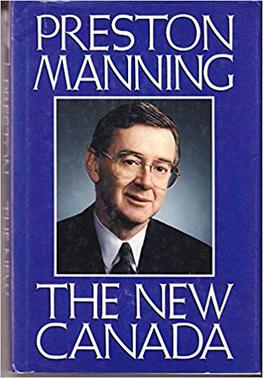
The People's Party, also known as the Populist Party or simply the Populists, was a left-wing agrarian populist political party in the United States in the late 19th century. The Populist Party emerged in the early 1890s as an important force in the Southern and Western United States, but collapsed after it nominated Democrat William Jennings Bryan in the 1896 United States presidential election. A rump faction of the party continued to operate into the first decade of the 20th century, but never matched the popularity of the party in the early 1890s.

Populism refers to a range of political stances that emphasize the idea of "the people" and often juxtapose this group against "the elite". It is frequently associated with anti-establishment and anti-political sentiment. The term developed in the late 19th century and has been applied to various politicians, parties and movements since that time, often as a pejorative. Within political science and other social sciences, several different definitions of populism have been employed, with some scholars proposing that the term be rejected altogether.

The history of the United States from 1865 until 1918 covers the Reconstruction Era, the Gilded Age, and the Progressive Era, and includes the rise of industrialization and the resulting surge of immigration in the United States. This article focuses on political, economic, and diplomatic history.

Charles Austin Beard was an American historian and professor, who wrote primarily during the first half of the 20th century. A history professor at Columbia University, Beard's influence is primarily due to his publications in the fields of history and political science. His works included a radical re-evaluation of the Founding Fathers of the United States, whom he believed to be more motivated by economics than by philosophical principles. Beard's most influential book, An Economic Interpretation of the Constitution of the United States (1913), has been the subject of great controversy ever since its publication. While it has been frequently criticized for its methodology and conclusions, it was responsible for a wide-ranging reinterpretation of early American history.

The Mugwumps were Republican political activists in the United States who were intensely opposed to political corruption. They were never formally organized. Typically they switched parties from the Republican Party by supporting Democratic candidate Grover Cleveland in the presidential election of 1884. They switched because they rejected the long history of corruption associated with Republican candidate James G. Blaine. In a close election, the Mugwumps claimed they made the difference in New York State and swung the election to Cleveland. The jocular word "mugwump", noted as early as 1832, is from Algonquian mugquomp, "important person, kingpin", implying that Mugwumps were "sanctimonious" or "holier-than-thou" in holding themselves aloof from party politics.

In United States history, the Gilded Age was an era extending roughly from 1877 to 1900, which was sandwiched between the Reconstruction era and the Progressive Era. It was a time of rapid economic growth, especially in the Northern and Western United States. As American wages grew much higher than those in Europe, especially for skilled workers, and industrialization demanded an ever-increasing unskilled labor force, the period saw an influx of millions of European immigrants.

Richard Hofstadter was an American historian and public intellectual of the mid-20th century.

The Progressive Era (1896–1917) was a period of widespread social activism and political reform across the United States focused on defeating corruption, monopoly, waste, and inefficiency. The main themes ended during American involvement in World War I (1917–1918) while the waste and efficiency elements continued into the 1920s. Progressives sought to address the problems caused by rapid industrialization, urbanization, immigration, and political corruption; and by the enormous concentration of industrial ownership in monopolies. They were alarmed by the spread of slums, poverty, and the exploitation of labor. Multiple overlapping progressive movements fought perceived social, political and economic ills by advancing democracy, scientific methods, professionalism and efficiency; regulating businesses, protecting the natural environment, and improving working conditions in factories and living conditions of the urban poor. Spreading the message of reform through mass-circulation newspapers and magazines by "probing the dark corners of American life" were investigative journalists known as “muckrakers". The main advocates of progressivism were often middle-class social reformers.
Progressivism in the United States is a political philosophy and reform movement in the United States advocating policies that are generally considered social democratic and left-wing.
Economic progressivism or fiscalprogressivism is a political and economic philosophy incorporating the socioeconomic principles of social democrats and political progressives. These views are often rooted in the concept of social justice and have the goal of improving the human condition through government regulation, social protections and the maintenance of public goods. It is not to be confused with the more general idea of progress in relation to economic growth.

The Fourth Party System was the political party system in the United States from about 1896 to 1932 that was dominated by the Republican Party, except the 1912 split in which Democrats captured the White House and held it for eight years.

"The Paranoid Style in American Politics" is an essay by American historian Richard J. Hofstadter, first published in Harper's Magazine in November 1964. It was the title essay in a book by the author the following year. Published soon after Senator Barry Goldwater won the Republican presidential nomination over the more moderate Nelson A. Rockefeller, Hofstadter's article explores the influence of a particular style of conspiracy theory and "movements of suspicious discontent" throughout American history.

The New Canada is a Canadian political literature book written by Reform Party of Canada founder and leader Preston Manning and published by Macmillan Canada. The book explains the personal, religious, and political life of Preston Manning and explains the roots and beliefs of the Reform Party. At the time of its publishing in 1991, Reform had become a popular populist conservative party in Western Canada after the mainstream Progressive Conservative Party of Canada was collapsing in support and in 1991 decided to expand eastward into Ontario and the Maritime provinces. One year later the PC party collapsed in the 1993 federal election, allowing the Reform Party to make political history in Canada, displacing the PCs as the dominant conservative party in Canada. Reform, later renamed the Canadian Alliance, merged with the PC Party in 2003, to form a united right-wing alternative to the governing Liberal Party of Canada, named the Conservative Party of Canada which has dropped many of the populist themes that the Reform Party had.
The furtive fallacy is an informal fallacy of emphasis in which historical outcomes are asserted to be the result of hidden misconduct or wrongdoing by decision makers. Historian David Hackett Fischer identified it as the belief that significant facts of history are necessarily sinister, and that "history itself is a story of causes mostly insidious and results mostly invidious." Although it may lead to a conspiracy theory, the fallacy itself consists in the assumption that misdeeds lurk behind every page of history. In its extreme form, the fallacy represents general paranoia.

Corruption in the United States is the act of government officials abusing their political powers for private gain, typically through bribery or other methods, in the United States government. Corruption in the United States has been a perennial political issue, peaking in the Jacksonian era and the Gilded Age before declining with the reforms of the Progressive Era.

Left-wing populism, also called social populism, is a political ideology that combines left-wing politics with populist rhetoric and themes. Its rhetoric often consists of anti-elitism, opposition to the Establishment, and speaking for the "common people". Recurring themes for left-wing populists include economic democracy, social justice, and scepticism of globalization. Socialist theory plays a lesser role than in traditional left-wing ideologies.
Progressivism holds that it is possible to improve human societies through political action. As a political movement, progressivism seeks to advance the human condition through social reform based on purported advancements in science, technology, economic development, and social organization. Adherents hold that progressivism has universal application and endeavor to spread this idea to human societies everywhere. Progressivism arose during the Age of Enlightenment out of the belief that civility in Europe was improving due to the application of new empirical knowledge to the governance of society.
George Edwin Mowry was an American historian focusing primarily on the Progressive Era. As a professor at UCLA and the University of North Carolina at Chapel Hill, he taught large classes and directed over 50 PhD dissertations. Mowry published five books, co-authored six others and edited three books. He published 10 book chapters, over 50 encyclopedia articles and over 100 book reviews in magazines and professional journals. He joined John Donald Hicks as coauthor of a highly successful university textbook. He was active in many organizations, especially the Organization of American Historians. His interpretation of the middle class foundation of the Progressive Era remains influential.
Populism in the United States reaches back to the Presidency of Andrew Jackson in the 1830s and to the People's Party in the 1890s. It has made a resurgence in modern-day politics in not only the United States but also democracies around the world. Populism is an approach to politics which views "the people" as being opposed to "the elite" and is often used as a synonym of anti-establishment; as an ideology, it transcends the typical divisions of left and right and has become more prevalent in the US with the rise of disenfranchisement and apathy toward the establishment. The definition of populism is a complex one as due to its mercurial nature; it has been defined by many different scholars with different focuses, including political, economic, social, and discursive features. Populism is often split into two variants in the US, one with a focus on culture and the other that focuses on economics.

"Radicalism" or "radical liberalism" was a political ideology in the 19th century United States aimed at increasing political and economic equality. The ideology was rooted in a belief in the power of the ordinary man, political equality, and the need to protect civil liberties.













